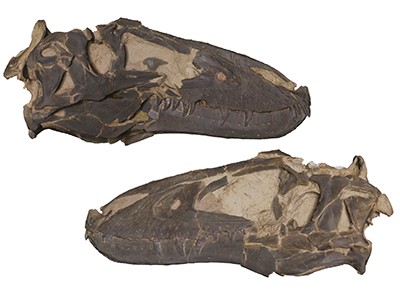Hotly debated dinosaur is not a tiny T. rex after all
Summary
A newly described fossil supports the view that Nanotyrannus is a distinct species rather than a juvenile Tyrannosaurus rex. After decades of debate among palaeontologists, the new specimen and accompanying analysis indicate that these smaller tyrannosaur specimens coexisted with adult T. rex at the end of the Cretaceous, suggesting genuine species diversity rather than a growth stage of T. rex.
Key Points
- The new fossil provides morphological evidence that Nanotyrannus differs from juvenile T. rex specimens.
- Researchers argue that the two taxa coexisted at the close of the Cretaceous, opposing the idea that Nanotyrannus are simply young T. rex.
- Distinct anatomical traits — not just size — support species-level separation.
- The finding resolves a long-standing controversy in tyrannosaurid classification and growth interpretation.
- Implications include revised views of predator diversity and ecosystem structure in late Cretaceous North America.
Context and relevance
This paper tackles a decades-old dispute that matters to anyone tracking dinosaur evolution and palaeobiology. Distinguishing between juvenile and distinct species changes how scientists interpret fossil assemblages, growth rates and the diversity of large predators before the mass extinction. The result feeds into broader debates about how fossil variation should be read — as ontogeny (growth) or as separate species.
Author style
Punchy: This isn’t a minor tweak — it’s a major clarification that reshapes how palaeontologists view late-Cretaceous tyrannosaur diversity. If you care about how species are recognised in the fossil record, read the details.
Why should I read this?
Because it finally gives the dinosaur-nerd world (and serious palaeontologists) solid ammo in a fight that’s been going on for years. If you enjoy neat scientific detective work or want to know whether those smaller skulls were baby T. rexes or proper rivals — this is the paper that clears it up.
Article Meta
Article Date: 30 October 2025
Article URL: https://www.nature.com/articles/d41586-025-03561-z
Article Image: Image link

